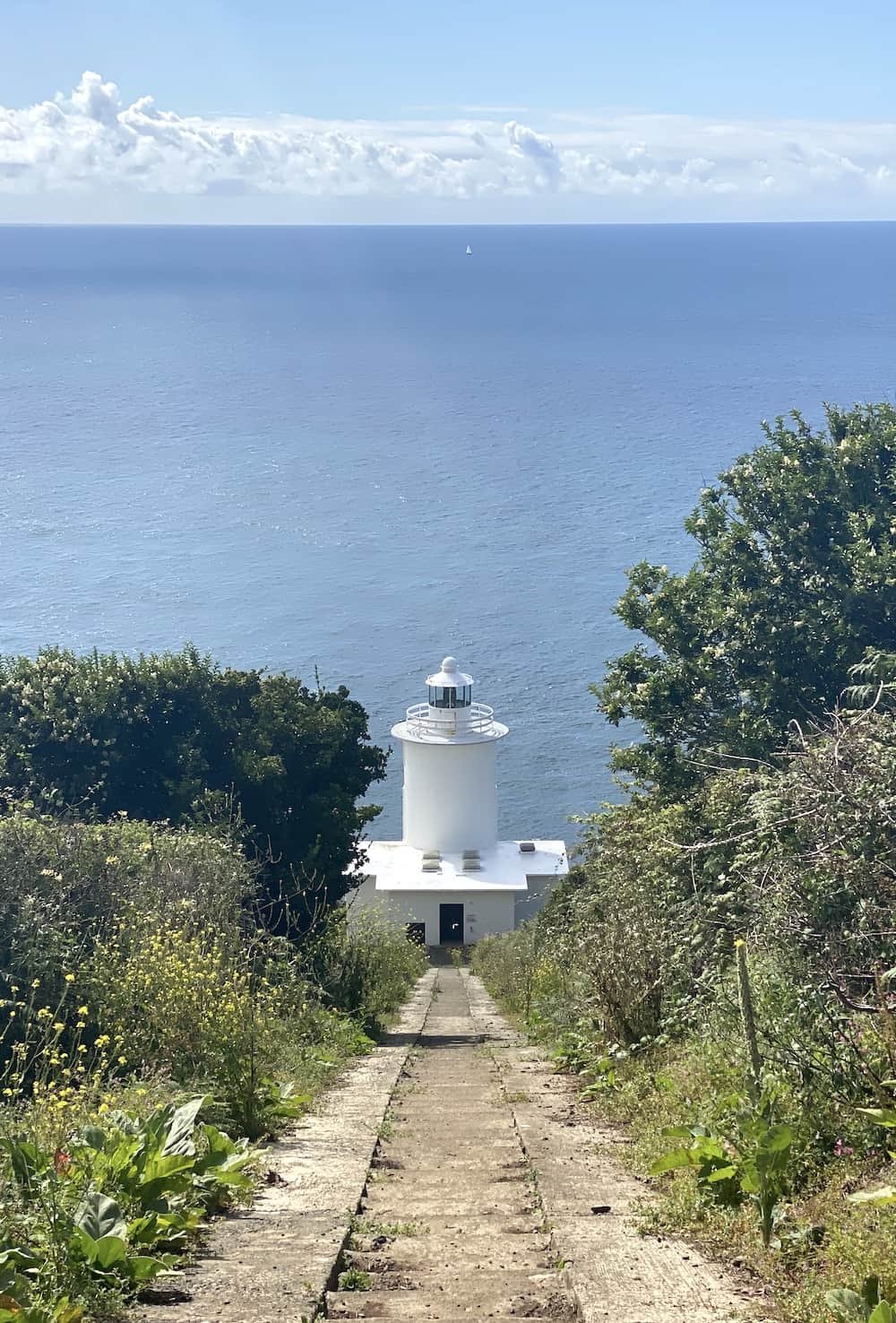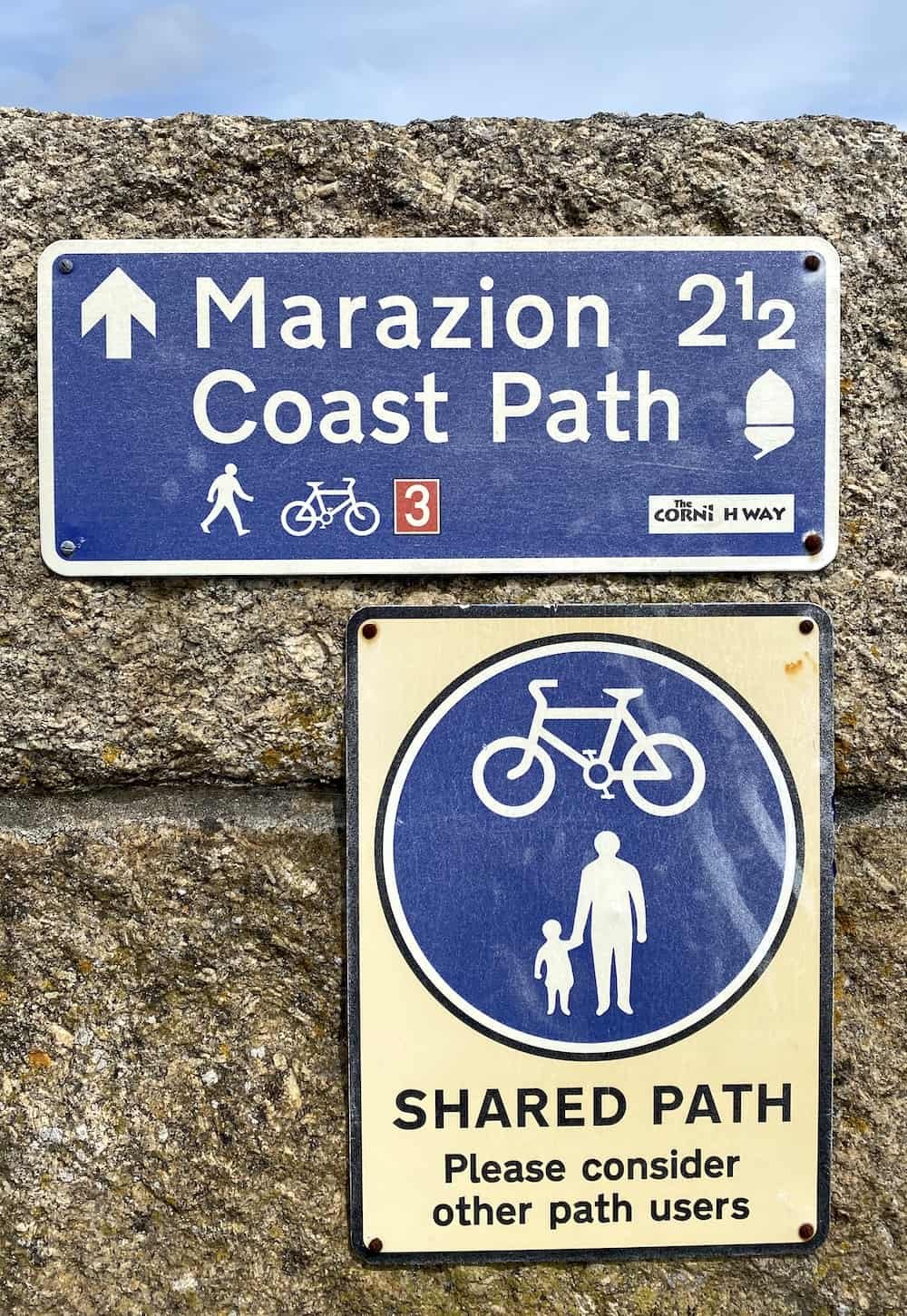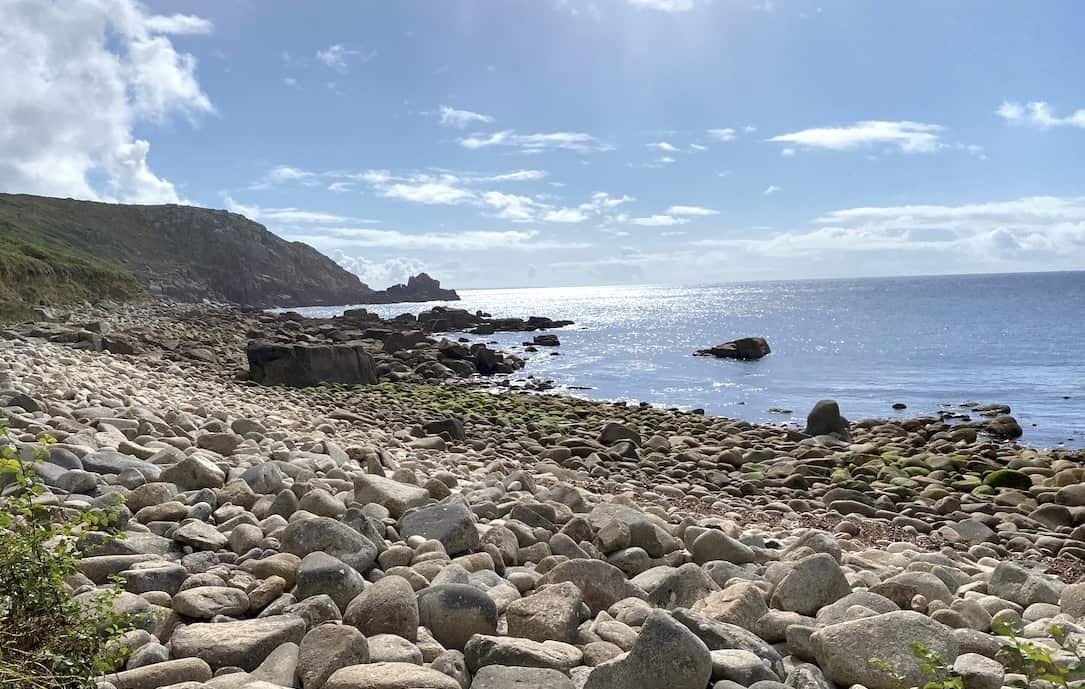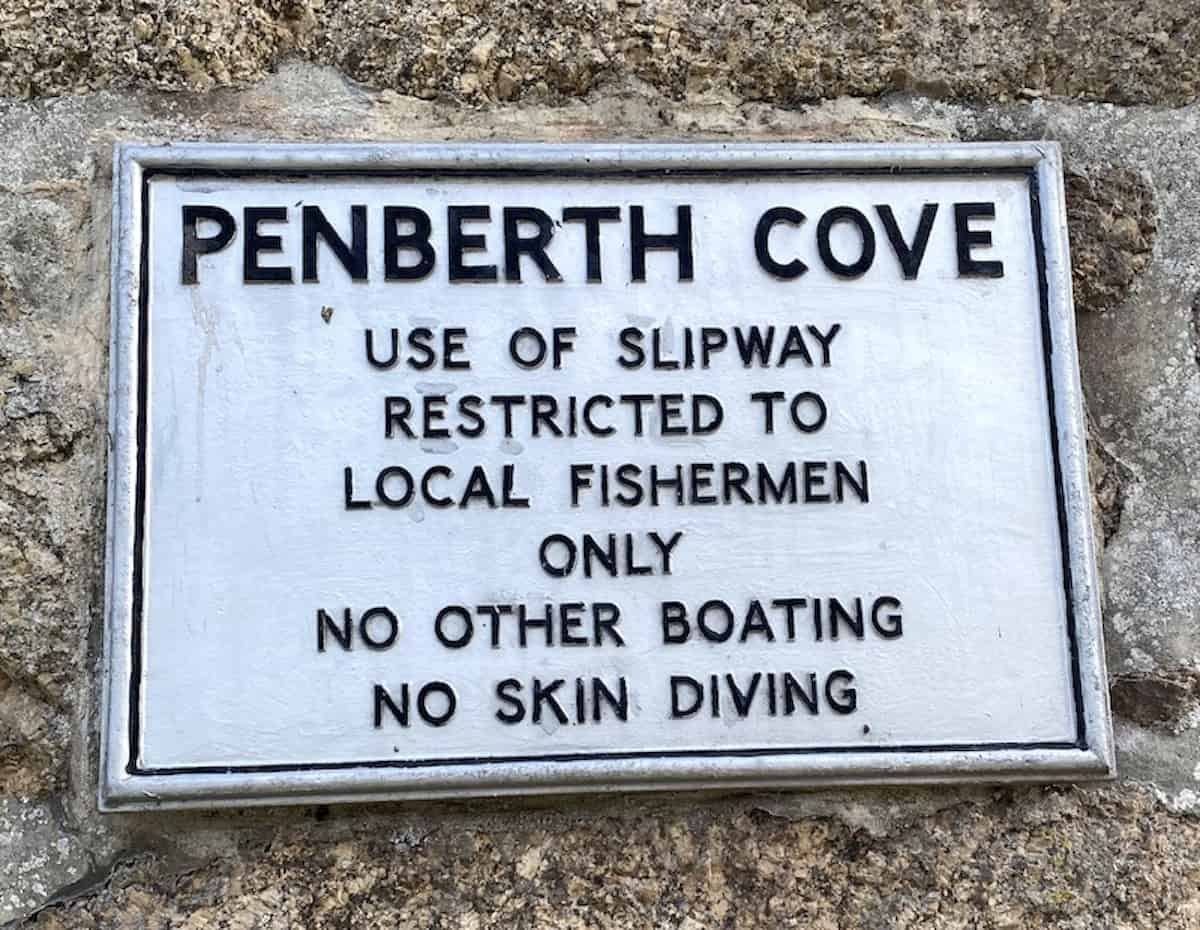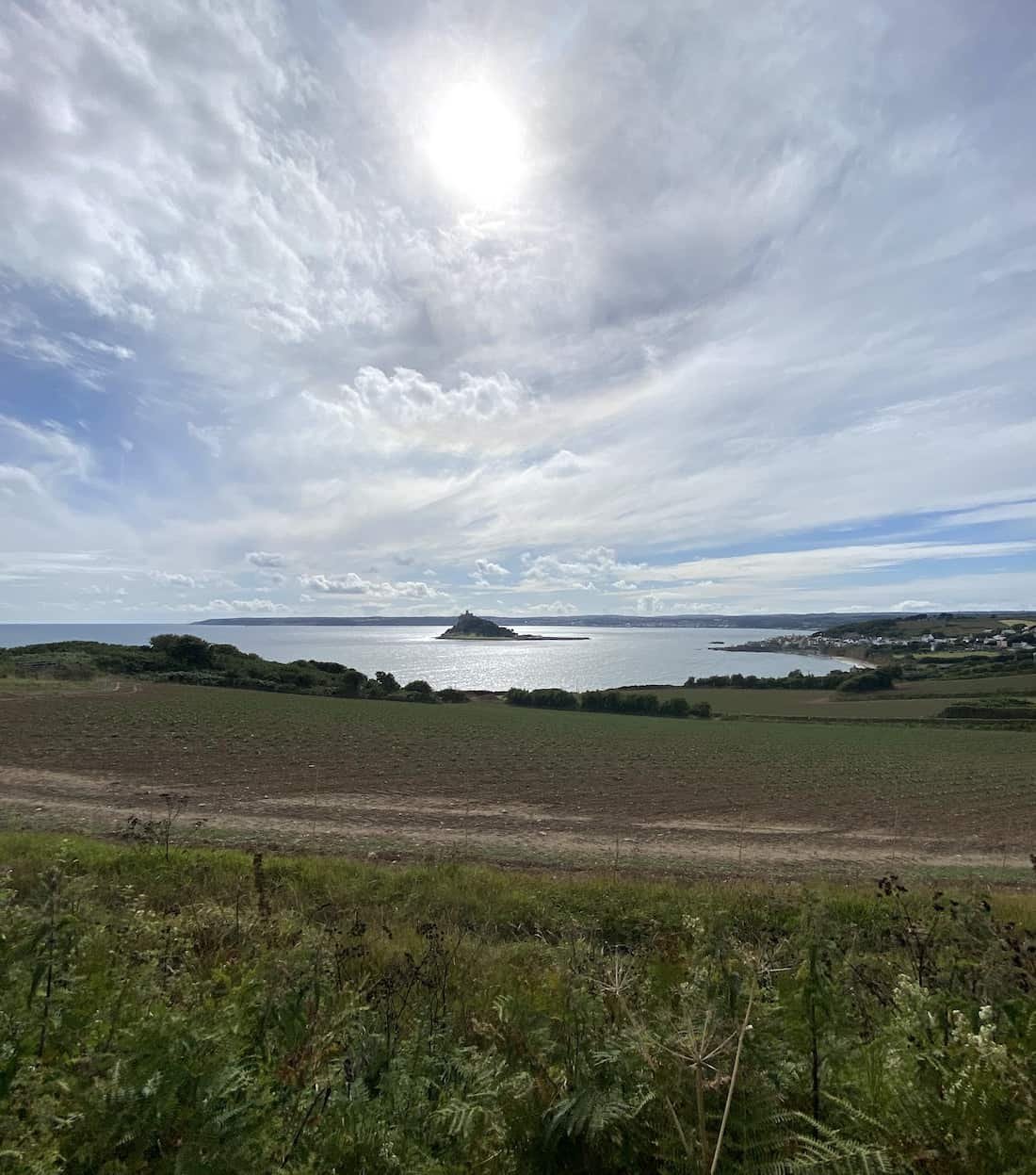The South West Coast Path - Part 6

I was happy to have a friend with me for the second day in a row; someone to share the fun and fitness of hiking big miles and seeing beautiful things. Emily is an old friend and kindred spirit in the ways of adventure so it’s always lovely to chat and walk with her. We headed from Treen down into Penberth cove, a place that has become visually well known as Sawle Village in the TV show Poldark as home to Demelza’s two brothers. I don’t watch the show, but plenty of people loved to tell me about it when I was hiking in the USA - even more than when I travel in the UK and say I’m from Cornwall. I remember the final leg of my epic journey to get to the top of the Appalachian Trail in Northern Maine - miles from anywhere and on a tiny coach winding down narrow tracks. The driver asked me where I was from as he heard my British accent. I said “Cornwall”, and he said “Oh my LORD - POLDARK!! I love that show. Is it really that beautiful?!” And then set about brilliantly butchering the accent. Of course I said yes and my heart swelled at at how lucky I am to be Cornish.
Penberth has a small, colourful fleet of fishing boats and stacks of beautiful inkwell fishing pots next to pretty cottage walls. Despite there being a fair number of tourists looking around (and I myself was one with my backpack, even though I am Cornish!) it still felt like a proper working cove. Well worth a visit, especially now the season is getting quieter. I really enjoyed the next stretch of coast dipping in and out of hamlets and past small but hefty buildings; built to withstand the weather that the sea likes to deliver. Next up we hiked across a beach stretch which was totally full of extremely large pebbles, or if you rather; small boulders. The layers of rocks seemed to extend deeply downwards into the ground, as when I looked below where I was balanced I could only see the sides and corners of other rounded stones below the one I stood on and the dark nooks and crannies between. No bottom.

Hmmm, I wonder if Em’s dropped phone found the bottom? I heard the thunk and turned to look at her, but it was only when the expression of pure disbelief crossed her face as she looked down that I realised her phone had not just hit the deck, but pinged down between boulders far too big to ever move. She took it on the chin, breathed deeply and on we went. Who needs technology with these views? We were heading toward one of my favourite coves; Lamorna. On the way there’s a pretty Celtic cross on the cliffside that I’ve often wondered about. It has three letters and a date carved into the seaward side; “DWW 1873” and so I did some research to find out why it was there and what it all meant. Thanks to a a great Cornish blog - cornishbirdblog.com - I discovered that the cross was erected by the local community after the tragic death of a man named David Wordsworth Watson in 1873. He was only 23, visiting the area and had been picking ferns on the cliff with a friend when he fell and died. A sad story, but it felt good to understand its purpose and know that young man’s name.

Mousehole was the next lovely village en route. I had passed some people hiking the other direction a few days before and they had said they had loved ‘Mouse-Hole’. In times past I might have thought their pronunciation was quite funny, but these days after travelling so much, trying so hard to pronounce unfamiliar places correctly and being graciously helped by locals; I know that snark isn’t nice, so I told them how most people here say it. They were grateful! Speaking of language, I also passed a sign in the village telling me that Dolly Pentreath had lived in a cottage on the site - wow. She was one of the last known speakers of Cornish language as her native tongue and I had learned about her when I taught at Camborne School but I didn’t know where she had been from. She died in 1777 so it’s been a while since you needed to be fluent in Cornish to speak to some folks, but I love that the learning of the Cornish language is having a resurgence these days.

I was in the mood for digging up more history as I walked though the village, and happily spotted a plaque was on the side of what was once a pub called the Keigwin Arms, which still stands but isn’t a pub anymore. It commemorates ‘Squire Jenkyn Keigwin’ who was killed there in July 1595, defending his house against Spanish invaders who had rowed four galleys (warships powered by oars) containing 300-400 Spanish soldiers into the village! This was in the middle of the Anglo-Spanish war. Mousehole was an important town in the area at the time, and word was quickly sent to Sir Francis Drake in Plymouth who was putting together a fleet for battle, but he didn’t manage so send much help and the village’s thatched roofs were set alight causing massive damage. The the Spanish ships then traveled to Newlyn and Penzance, setting fire to those towns too! Dark times for West Cornwall. Keigwin House is the oldest in Mousehole now, and I’m glad Squire Keigwin protected it.


Emily and I pushed on through the famous fishing town of Newlyn and into Penzance. We were so hot and tired that we wanted to jump right into the glorious Art Deco sea lido on the seafront; Jubilee Pool. It’s the largest of it’s kind in the UK! But alas, no time. We grabbed a coffee before I said goodbye to my friend and strode merrily onwards, towards Mount’s Bay and the majestic St Michael’s Mount.
